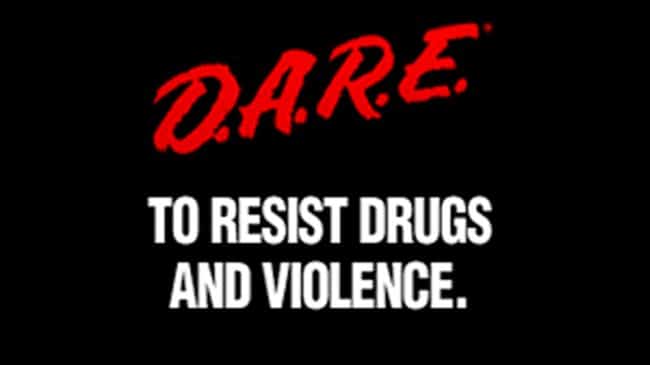Cue the pomp and circumstance: Kids around Southern California are graduating from Drug Abuse Resistance Education (DARE) programs. Don’t get too excited, though – these “degrees” aren’t worth the paper they’re printed on.
DARE’s much-hyped plan to teach kids to “Just Say No” is short on success and long on evidence of failure. In 2001, the U.S. surgeon general and the National Academy of Sciences called DARE ineffective. And just a few weeks ago, the General Accounting Office – Congress’ investigative arm – issued a report stating, “the six long-term evaluations of the DARE elementary school curriculum that we reviewed found no significant differences in illicit drug use between students who received DARE in the fifth or sixth grade (the intervention group) and students who did not (the control group).”
Translation: Kids that complete DARE’s program are just as likely to use drugs as children who are never exposed to the “Just Say No” message. And that begs the question, how long will we as taxpayers dare to pay for a program that doesn’t work? We’re currently at 20 years and counting with DARE.
According to The New York Times, in 2001 the Department of Justice (read taxpayers) gave DARE about $1.7 million; police departments (read taxpayers) gave DARE approximately $215 million in indirect benefits in the form of officer salaries for speaking appearances and other duties; and DARE received around $15 million in private support.
Across the country, you can add millions of dollars in state (read taxpayer money), local (read taxpayer money), and school district (read taxpayer) money that is annually poured into the program.
We can applaud the efforts of well-meaning volunteers who invest personal time to advance their views. But the government gravy train should stop immediately.
Thanks to quickly escalating budget deficits and the program’s failures, many local governments have already started slashing DARE-related expenditures. In Long Beach, budget problems recently forced the city to move half of the program’s police officers back to where they belong – patrolling the streets. And in Huntington Beach, city officials suspended the police department’s DARE programs at the Ocean View and Huntington Beach City school districts.
But like a junkie, DARE is desperately trying to hold on to its federal funds by somewhat altering its curriculum. Back in 2001, facing an onslaught of criticism after several studies highlighted the dismal results, DARE said it would revamp its programs to target kids in seventh and ninth grades, instead of fifth- and sixth-graders.
But DARE could only manage to overhaul its program in six cities. The University of Akron and DARE are working together to implement these changes and to study a group of students immersed in the “revised” program in six metropolitan areas, including Los Angeles. Of course, since this is an internal study, the findings are likely to be much more positive than the previous nonpartisan reports that have been extremely critical of DARE. And this in-house assessment won’t be complete until 2006 – meaning millions more in taxpayer money will flow to the program in the interim. Furthermore, while select students in six cities may be getting a new lesson from DARE, the vast majority of kids continue to receive the same old tired message – a message that has proven to be completely useless.
So let’s weigh the evidence: 20 years of data showing the program doesn’t work; a track record of excruciatingly slow change; and law enforcement patrols stretched to the brink because officers who should be enforcing the law are assigned to classroom duties where they preach abstinence and reiterate the same worn-out statistics. And yet, DARE continues to expect our support just because they’ve decided to ever so slightly alter their game plan?
Even the federal Department of Education, a model in wasteful spending if there ever was one, refuses to endorse funding of the program. DARE was conspicuously absent from the department’s 2001 list of nine “exemplary” and 33 “promising” school-based programs that “promote safe, disciplined and drug-free schools.”
The grim reality is that there are no surefire ways to keep children away from drugs and alcohol, and the evidence shows DARE’s scare tactics often backfire in the long run. I have two kids myself, and I must first show my children responsible behavior through my own actions. It is also my responsibility to teach my children rationally about the potential perils of drug abuse.
The billions of dollars spent on DARE clearly can’t compete with parental involvement. DARE’s results do not show success. And they do not show progress. We are staring at an ever-growing mountain of evidence demonstrating that DARE simply does not work – kids in the program are just as likely to use drugs as children not in the program. Reality doesn’t get much harsher than that. It is clearly time to cut our losses with DARE and return to the tried-and-true approach of personal responsibility.
David Nott is the President of Reason Foundation.

